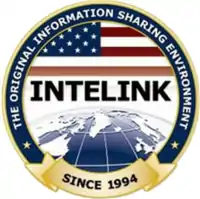
Intelink is a group of secure intranets used by the United States Intelligence Community. The first Intelink network was established in 1994 to take advantage of Internet technologies (though not connected to the public Internet) and services to promote intelligence dissemination and business workflow. Since then it has become an essential capability for the US intelligence community and its partners to share information, collaborate across agencies, and conduct business. Intelink refers to the web environment on protected top secret, secret, and unclassified networks. One of the key features of Intelink is Intellipedia, an online system for collaborative data sharing based on MediaWiki. Intelink uses WordPress as the basis of its blogging service.

Versions on different intranets
Intelink-U
Intelink-U (Intelink-SBU) is a sensitive but unclassified (SBU) variant of Intelink which was established for use by U.S. federal organizations and properly vetted state, tribal, and local officials so sensitive information and open source intelligence could be shared amongst a secure community of interest. Intelink-U was formerly known as the Open Source Information System (OSIS). Intelink-U operates on the DNI-U network.[1][2][3]
Intelink-S
Intelink-S (Intelink-Secret or Intelink-SIPRNet) is the secret-level variant of Intelink which is primarily used by the U.S. Departments of Defense, State, and Justice. Intelink-S operates on SIPRNet.[1][3]
Intelink-TS
Intelink-TS (Intelink-SCI) is the Intelligence Community's Intelink which facilitates sharing intelligence products up to the Top Secret/Sensitive Compartmented Information (SCI) level. Intelink-TS operates on JWICS.[3][4]
Intelink-P
Intelink-P (Intelink-PolicyNet) is run by the Central Intelligence Agency as CIA's sole-source link to the White House and other high-level, intelligence consumers. Today, Intelink-P is more commonly referred to as CapNet.[3][5]
Intelink-C
Intelink-C (Intelink-Commonwealth) links the United States, the United Kingdom, Canada, and Australia intelligence communities at the TS/SCI level. Today, Intelink-C is more commonly referred to by its network name of STONEGHOST.[3][5]
Books and novels
In 1999 Fredrick Thomas Martin wrote a book about Intelink, titled How U.S. Intelligence Built INTELINK, The World's Largest, Most Secure Network. It claims to be an inside look at the U.S. intelligence community's worldwide, super-secure intranet, and the never-before-published story of Intelink.[6]
In the novel Rogue Warrior: Task Force Blue by Richard Marcinko, the protagonist uses Intelink, during his mission countering domestic terrorism in the United States, and his assassination of a Ross Perot-like character, who is the architect of a domestic terror network.
In the novel Threat Vector by Tom Clancy, one of the characters found an exploit in the Microsoft's Remote Desktop Protocol that allowed him to penetrate the networks of a United States defense contractor and exploit that penetration to access Intelink-TS.
References
- 1 2 Federation of American Scientists Intelligence Resource Program: Intelink
- ↑ Federation of American Scientists Intelligence Resource Program: Open Source Information System (OSIS) Archived 2015-04-09 at the Wayback Machine
- 1 2 3 4 5 National Intelligence, a consumer's guide, 2009 Archived 2012-05-24 at the Wayback Machine
- ↑ Federal Bureau of Investigation - Congressional Testimony Archived 2010-04-10 at the Wayback Machine Statement of Gary M. Bald Executive Assistant Director National Security Branch Federal Bureau of Investigation Before the United States Senate Committee on the Judiciary September 21, 2005
- 1 2 Intelligence in the Internet Era – Studies in Intelligence Archived 2007-04-22 at the Wayback Machine
- ↑ Home Page for Top Secret Intranet: How U.S. Intelligence Built INTELINK - The World's Largest, Most Secure Network
Intelink itself is also mentioned in several novels written by Andy Mcnab, in particular Crisis Four.
External links
- Intelink-U home page
- "Connecting the Virtual Dots: How the Web Can Relieve Our Information Glut and Get Us Talking to Each Other", Matthew S. Burton, Studies in Intelligence, September 2005
- "The wiki and the blog: toward a complex adaptive intelligence community", D. Calvin Andrus, September 2005.
- "Wikis and blogs" presentation by D. Calvin Andrus at the Knowledge Management Conference and Exhibition, April 21, 2006.
- "Rants + raves: agent of change", Wired, September 2006.
- "Spies Come In From The Cold With Own Vid-Share Site", Wired, March 25, 2008